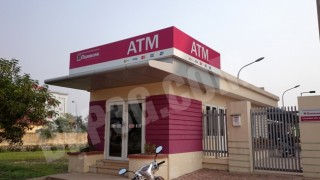Understanding Accounting Rate of Return ARR
- Danh mục: Bookkeeping
The Accounting Rate of Return is also sometimes referred to as the “Internal Rate of Return” (IRR). Therefore, this means that for every dollar invested, the investment will return a profit of about 54.76 cents. If the ARR is equal to 5%, this means that the project is expected to earn five cents for every dollar invested per year.
- If the result is more than the minimum rate of return the business requires, that is an indication the investment may be worthwhile.
- In both cases, the rate of return is higher than our 10% hurdle rate, but the purchase yields a higher overall rate of return and therefore looks like the better investment in the long term.
- Discounted cash flows take the earnings of an investment and discount each of the cash flows based on a discount rate.
- Thus, if a company projects that it will earn an average annual profit of $70,000 on an initial investment of $1,000,000, then the project has an accounting rate of return of 7%.
- A stand-alone analysis might result in a project approval, when other elements of the surrounding system will have a negative impact on the investment, resulting in no clear gain as a result of the project.
A good return on investment is generally considered to be about 7% per year, which is also the average annual return of the S&P 500, adjusting for inflation. The rate of return can be calculated for any investment, dealing with any kind of asset. Let’s take the example of purchasing a home as a basic example for understanding how to calculate the RoR. Say that you buy a house for $250,000 (for simplicity let’s assume you pay 100% cash).
What is your risk tolerance?
Accept the project only if its ARR is equal to or greater than the required accounting rate of return. The yield then, also called return on investment, was $4,000 / $28,000 for the refurbish, which comes to 14.29%, and $6,600 / $35,000 for the purchase, which comes to 18.86%. In both cases, the rate of return is higher than our 10% hurdle rate, but the purchase yields a higher overall rate of return and therefore looks like the better investment in the long term.
Module 9: Capital Investment Analysis
Accounting rate of return is the estimated accounting profit that the company makes from investment or the assets. It is the percentage of average annual profit over the initial investment cost. This method is very useful for project evaluation and decision making while the fund is limited.
Different investments may involve different time periods, which can change the overall value proposition. The Accounting rate of return is used by businesses to measure the return on a project in terms of income, where income is not equivalent to cash flow because of other factors used in the computation of cash flow. Calculating ARR or Accounting Rate of Return provides visibility of the interest you have actually earned on your investment; the higher the ARR the higher the profitability of a project. Note that the regular rate of return describes the gain or loss, expressed in a percentage, of an investment over an arbitrary time period.
The CAGR is the mean annual rate of return of an investment over a specified period of time longer than one year, which means the calculation must factor in growth over multiple periods. Accounting rate of return is also sometimes called the simple rate of return or the average rate of return. Accounting rate of return can be used to screen individual projects, but it is not well-suited to comparing investment opportunities.
Internal Rate of Return (IRR) and Discounted Cash Flow (DCF)
Remember that you may need to change these details depending on the specifics of your project. Overall, however, this is a simple and efficient method for anyone who wants to learn how to calculate Accounting Rate of Return in Excel. There are various advantages and disadvantages of using ARR when evaluating investment decisions. The total Cash Inflow from the investment would be around $50,000 in the 1st Year, $45,000 for the next three years, and $30,000 for the 5th year. We do not manage client funds or hold custody of assets, we help users connect with relevant financial advisors.
Using the ARR calculator can also help to validate your manual account calculations. One easy way to take future cash flows into account is to borrow a financial accounting ratio analysis to compute an estimated rate of return on the investment. A closely related concept to the simple rate of return is the compound annual growth rate (CAGR).
Finish Your Free Account Setup
The RRR can vary between investors as they each have a different tolerance for risk. For example, a risk-averse investor likely would require a higher rate of return to compensate for any risk from the investment. It’s important to utilize multiple financial metrics including ARR and RRR to determine if an investment would be worthwhile based on your level of risk tolerance. Every business tries to save money and further invest to generate more money and establish/sustain business growth. Unlike ARR, IRR employs complex algebraic formulas, considering the time value of money by discounting all cash flows to their present value. This detailed approach, giving more weightage to current cash flows, enables IRR to assess investment opportunities comprehensively.
How to Calculate Accounting Rate of Return?
Once the effect of inflation is taken into account, we call that the real rate of return (or the inflation-adjusted rate of return). The simple rate of return is considered a nominal rate of return since it does not account for the effect of inflation over time. Inflation reduces the purchasing power of money, and so $335,000 six years from now is not the same as $335,000 today. Working with an adviser may come with potential downsides such as payment of fees (which will reduce returns). There are no guarantees that working with an adviser will yield positive returns. The existence of a fiduciary duty does not prevent the rise of potential conflicts of interest.
Rather than looking at cash flows, as other investment evaluation tools like net present value and internal rate of return do, accounting rate of return examines net income. However, among its limits are the way it fails to account for the time value of money. Average accounting profit is the arithmetic mean of accounting income expected to be earned during each year of the project’s life time. Average investment may be calculated as the sum of the beginning and ending book value of the project divided by 2. Another variation of ARR formula uses initial investment instead of average investment.
This 31% means that the company will receive around 31 cents for every dollar it invests in that fixed asset. ARR helps businesses decide which assets to invest in for long-term growth by comparing them with the return of the other assets. The average book value is the sum of the beginning and ending fixed asset book value (i.e. the salvage value) divided by two. The ending fixed asset balance matches our salvage quickbooks training courses for professionals value assumption of $20 million, which is the amount the asset will be sold for at the end of the five-year period. The Accounting Rate of Return can be used to measure how well a project or investment does in terms of book profit. The time value of money is the concept that money available at the present time is worth more than an identical sum in the future because of its potential earning capacity.
Accounting Rates of Return are one of the most common tools used to determine an investment’s profitability. It can be used in many industries and businesses, including non-profits and governmental agencies. This is a solid tool for evaluating financial performance and it can be applied across multiple industries and businesses that take on projects with varying degrees of risk. The measure is not adequate for comparing one project to another, since there are many other factors than the rate of return that should be considered, not all of which can be expressed quantitatively. Ideally, a number of factors should be weighed by an experienced group of managers who are in the best position to decide which projects should proceed.
The rate of return (ROR) is a simple to calculate metric that shows the net gain or loss of an investment or project over a set period of time. In capital budgeting, the accounting rate of return, otherwise known as the “simple rate of return”, is the average net income received on a project as a percentage of the average initial investment. https://intuit-payroll.org/ The time value of money is the main concept of the discounted cash flow model, which better determines the value of an investment as it seeks to determine the present value of future cash flows. The accounting rate of return is a capital budgeting metric that’s useful if you want to calculate an investment’s profitability quickly.
Find out everything you need to know about the Accounting Rate of Return formula and how to calculate ARR, right here. ARR is the annual percentage of profit or returns received from the initial investment, whereas RRR is the required rate of return that the investor wants. The internal rate of return (IRR) also measures the performance of investments or projects, but while ROR shows the total growth since the start of the project, IRR shows the annual growth rate.


























